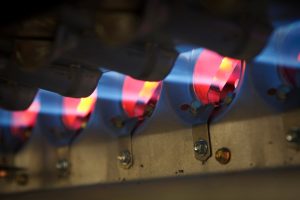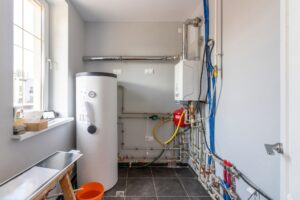5 Exhaust Terms to Be Familiar With

Exhaust is an extremely important concept when it comes to heating systems and heating repair in Rockland, NY. The fumes that come from a combusting furnace or boiler need to be exhausted somewhere away from homeowners and their family, and we do this by installing exhaust ports in homes across our area.
However, if an exhaust port is clogged up or running into problems, homeowners need to know how to identify these issues and call for help. This process starts with learning about some of the most important terms we use in the industry. From carbon monoxide to the heat exchanger of a furnace, there are certain components and materials that are integral to the heating process and will impact the exhaust port of a heating system.
Let’s talk about five terms that have to do with a furnace’s exhaust and how to tell when there might be a problem with them.
Knowledge Is Power!
We’re firm believers that the more knowledgeable our customers have, the better off they’ll be when trying to deal with a problem. If anyone out there is nervous about a furnace problem, then the first step would be to call for professional help. Until our technicians arrive, it couldn’t hurt to get informed on the terms that we might use when we talk about the work that must be done.
- Carbon monoxide. One of the byproducts of the combustion process is carbon monoxide. This is just a single molecule of oxygen and carbon, jammed together and taking up space inside your furnace. Carbon monoxide is dangerous because it can’t be processed by our respiratory systems and it can easily lead to health complications when inhaled. This contaminant needs to be jettisoned through an exhaust port, and homes need to be set up with carbon monoxide detectors to notice when there’s a leak.
- Smoke. Smoke isn’t as abundant when it comes from burning gas as it would from a wood fire, but it’s still a byproduct of the combustion process. We all know how bad smoke can be to inhale, so make sure any smoke is getting exhausted out of the home and that smoke detectors are in good shape.
- The exhaust port. When a gas furnace burns fuel and creates heat, the byproducts of this process that aren’t heat need to be exhausted somewhere. The exhaust port is a pathway that these contaminants can follow to exit out of a home.
- The heat exchanger. The heat exchanger is the component that stops contaminants in the air from entering the breathable space of a home. It exchanges heat from the toxic air to the clean air and allows a home to be heated without any dangerous fumes.
- Water vapor. One byproduct of combustion is water vapor. While this isn’t as harmful as the other contaminants that come from this process, it’s still not good to breathe in and it needs to be sent out the exhaust port. Just make sure this water vapor doesn’t freeze and cause blockages in the exhaust!







